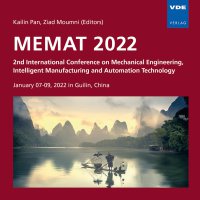Local Rapid Cooling Technology of High Strength Steel Sheet
Conference: MEMAT 2022 - 2nd International Conference on Mechanical Engineering, Intelligent Manufacturing and Automation Technology
01/07/2022 - 01/09/2022 at Guilin, China
Proceedings: MEMAT 2022
Pages: 4Language: englishTyp: PDF
Authors:
Liang, Xiao; Lin, Xiyue (China Academy of Machinery Science and Technology (CAM), Beijing, China & Beijing Research Institute of Mechanical & Electrical Technology (BRIMET), Beijing, China)
Li, Xianjun; Chen, Jiaheng; Yang, Tao; Luo, Ping; Chen, Runzhe; Zhang, Wenliang; Hou, Junqing (Beijing Research Institute of Mechanical & Electrical Technology (BRIMET), Beijing, China)
Xie, Huasheng (China Academy of Machinery Science and Technology (CAM), Beijing, China)
Abstract:
In order to obtain the hot-stamping parts with different strength areas and minimize the width of the transition regions, rapid cooling of the low-strength and high-plasticity regions are required in the tailored tempering with local rapid cooling technology of a 22MnB5 steel sheet, maintaining the high-strength areas under high temperature at the same time. In this paper, temperature changing and microstructure evolution are studied. Simultaneously, the effect of the air-return structure on the hardness distribution of the steel sheet is also studied. The result shows that dry ice particles can narrow down the width of transition regions during the rapid cooling process. In contrast, the uniformity of temperature in rapid cooling areas has been improved with a controllable shape after the air-return structure has been used. Water quenching the local-cooled 22MnB5 steel sheet after tempering at 750℃ for 30 seconds, the width of the performance transition areas can be reduced to 32mm with the hardness of about 270HV and 480HV in the soft and hard zone, respectively, due to the air-returning structure. Thus, the high strength steel sheet with narrow performance transition areas is obtained. The experimental design and the local cooling facility can be used as the reference to the control of transition regions of variable-strength parts and the technology development of gradient performance.


